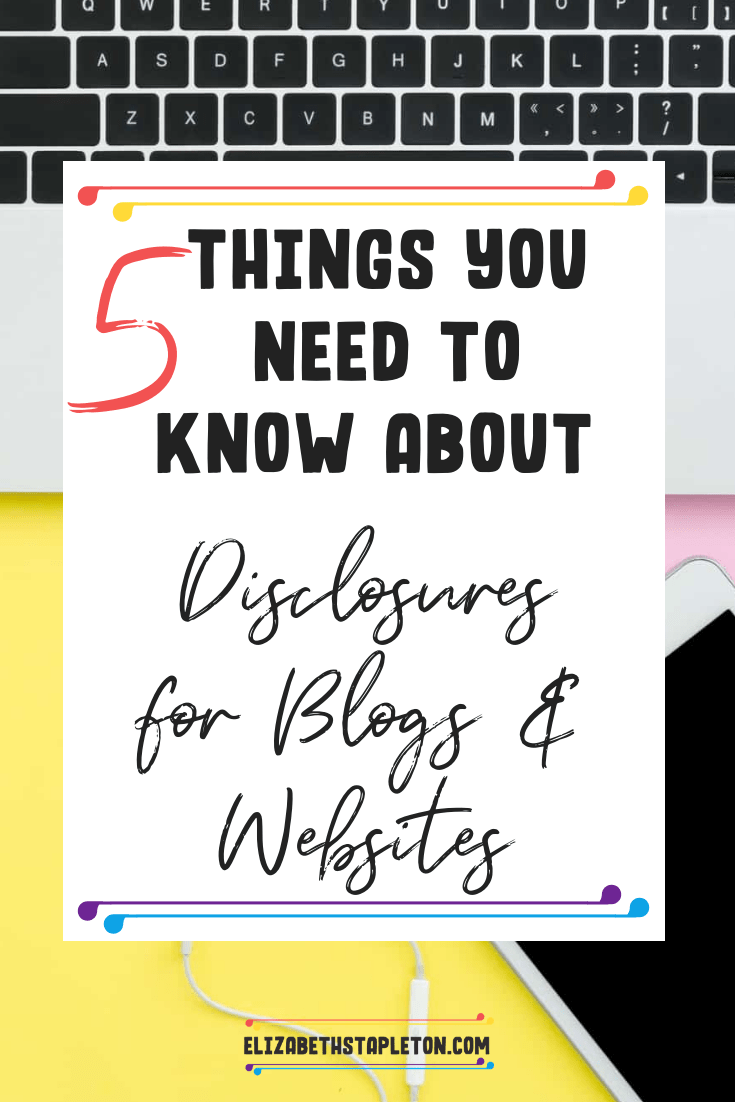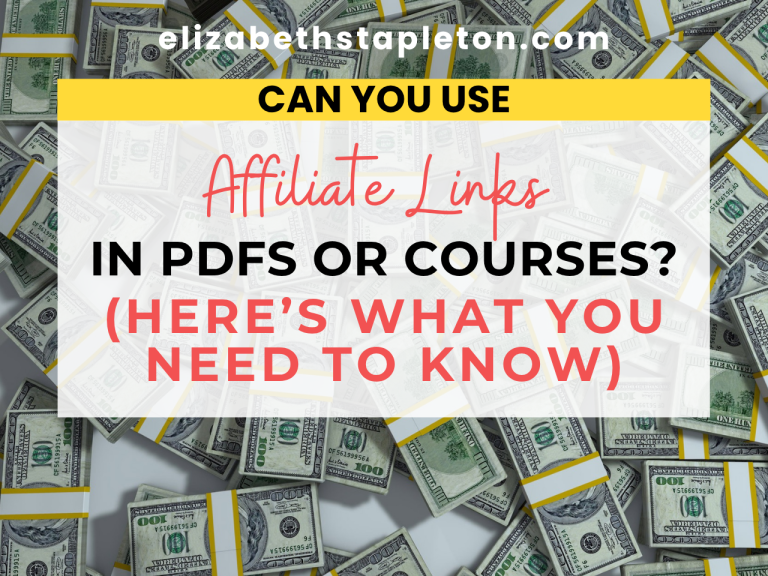7 Affiliate Disclosure Mistakes That Could Cost You — Legally and Financially
Affiliate marketing is a great way to earn money from your blog or emails. But if you’re not careful with how you share affiliate links, you could break the rules without even knowing it.
Here’s why this matters:
- You could lose your affiliate income
- You might get removed from affiliate programs
- You could even get a warning from the FTC (Federal Trade Commission)
The good news? These mistakes are easy to fix. Let’s walk through the most common ones so you can stay legal, earn more, and build trust with your readers.
1. Not Disclosing Affiliate Links in Emails
Many bloggers forget that emails count as content too. If you add an affiliate link to an email, you must add a disclosure.
Here’s what the FTC requires:
- Add the disclosure before the affiliate link
- Use clear language like: “This email has affiliate links. I may earn a commission at no extra cost to you.”
Why this matters:
- Readers must know you could earn money before they click.
- The FTC sees emails as the same as blog posts—you must be upfront.
Quick Fix:
Add one line at the top of your email. Something like: “Heads up: This email has affiliate links. I may earn a commission if you buy something, at no extra cost to you.”
2. Hiding Your Disclosure Where No One Sees It
It’s not just where you put the disclosure—it’s whether people will actually see it.
Here’s what bloggers often get wrong:
- Putting disclosures in a sidebar
- Using tiny font or a light gray color that’s hard to read
- Hiding disclosures in dropdowns or footnotes
Why this matters:
- On mobile, sidebars drop to the bottom—so your disclosure could be invisible.
- If someone clicks a link without seeing the disclosure first, you’re out of compliance.
Quick Fix:
Use clear text, that is at least the same size as the paragraph text on the page—right above or next to your first affiliate link. Skip the sidebar, popups, or tiny text.
3. Hiding Disclosures in Hashtags on Social Media
Many creators think adding #affiliate or #sponsored in a long list of hashtags is enough. It’s not.
Here’s the mistake:
- Your disclosure gets buried in a sea of hashtags
- It’s not clear to someone just scrolling or skimming
- The FTC says it must be “clear and upfront”
What the FTC expects:
- Start your social post with “ad” or “sponsored”
- The disclosure takes place before someone can click
- Alternatively, say something like “I may earn money if you buy through this link.”
Why this matters:
- On platforms like Instagram or TikTok, people see the first few lines only
- If your disclosure is hidden, the FTC sees that as misleading
Quick Fix:
Start your post with something like: “[Ad] I’m sharing this because I love it. I may earn a commission if you buy.”
Or on stories, use a sticker or text overlay that says “Paid Partnership” or “Affiliate Link.”
4. Using Vague or Confusing Language
Saying something like “This post contains affiliate links” might sound official—but it’s not enough.
Here’s why it doesn’t work:
- Most readers don’t know what an “affiliate link” is
- It doesn’t explain what that means for them
- The FTC says disclosures must be clear and in plain English
Clear vs. Confusing Language:
| ✅ Clear | ❌ Confusing |
| “I may earn a commission if you buy through my link.” | “This post contains affiliate links.” |
| “This is a sponsored post. I was paid to share this.” | “In collaboration with…” (too vague) |
| “At no extra cost to you, I earn if you click and buy.” | “#partner” or “#sp” without explanation |
Why this matters:
- If people don’t understand your disclosure, it doesn’t count.
- Clear language builds trust—and keeps you legally compliant.
Quick Fix:
Use everyday words. If your grandma wouldn’t understand your disclosure, then you aren’t being clear enough.
5. Skipping the Link to Your Full Disclosure Policy
A quick sentence in your post is important—but it’s only part of the story. You also need a full affiliate disclosure policy on your website.
Common mistakes:
- No disclosure page at all
- Mentioning affiliate links but not linking to a full explanation
- Thinking a one-line note covers everything
Why this matters:
- Some affiliate programs (like Amazon) require this
- A disclosure page shows transparency and protects you if questions come up
- It’s also helpful for readers who want more details
Quick Fix:
Create a “Disclosure” or “Legal” page. Add this line to your posts or emails: “Learn more in my full disclosure here [link].”
6. Not Disclosing Free Products or Gifts for Reviews
If a brand gives you something for free—even just to try—you need to say so.
Here’s the mistake:
- Writing a review without saying you got the item for free
- Thinking it’s only required if you got paid money
- Forgetting that free = payment in the eyes of the FTC
Disclosure Examples:
| ✅ Say This | ❌ Don’t Do This |
| “I received this product for free in exchange for my honest review.” | Leave out that you got it for free |
| “The company sent me this to try. Opinions are my own.” | Hide the relationship and sound like a random customer |
| “This post includes items I was gifted.” | Just say “sponsored” if you weren’t paid in cash |
Why this matters:
- You got something of value—that counts as compensation
- Your readers deserve to know
- Not disclosing can break trust (and get you removed from programs)
Quick Fix:
Add a simple sentence near the beginning of your post or video: “This item was gifted to me, but all opinions are my own.”
7. Treating Disclosures Like a One-Time Task
Some bloggers think they can just add a disclosure once and be done. That’s not how it works.
Here’s what goes wrong:
- Forgetting to add disclosures to new blog posts
- Not updating email templates with disclosure text
- Skipping disclosures on social media stories or reels
Why this matters:
- Every new piece of content with an affiliate link = new chance to disclose
- Reusing templates or automations can save time—but they must include disclosures
Quick Fix:
Set up templates that include disclosure lines by default.
Bottom Line: Keep It Legal, Keep It Honest, Keep Earning
Affiliate marketing is a smart way to earn money—but only if you follow the rules. These common disclosure mistakes are easy to make, but even easier to fix.
Here’s a quick recap:
- Disclose upfront in every blog post, email, and social post
- Use simple, clear language—not legal talk
- Make sure your disclosure is easy to see before any links
- Don’t forget to include your full disclosure policy
When you’re honest and upfront, readers trust you more—and trust leads to more clicks, more sales, and more income.Need help making your disclosures easy and automatic? Check out Affiliate Disclosures Made Easy — it’s a $9 resource that shows you exactly how to do it the right way without overthinking it.



